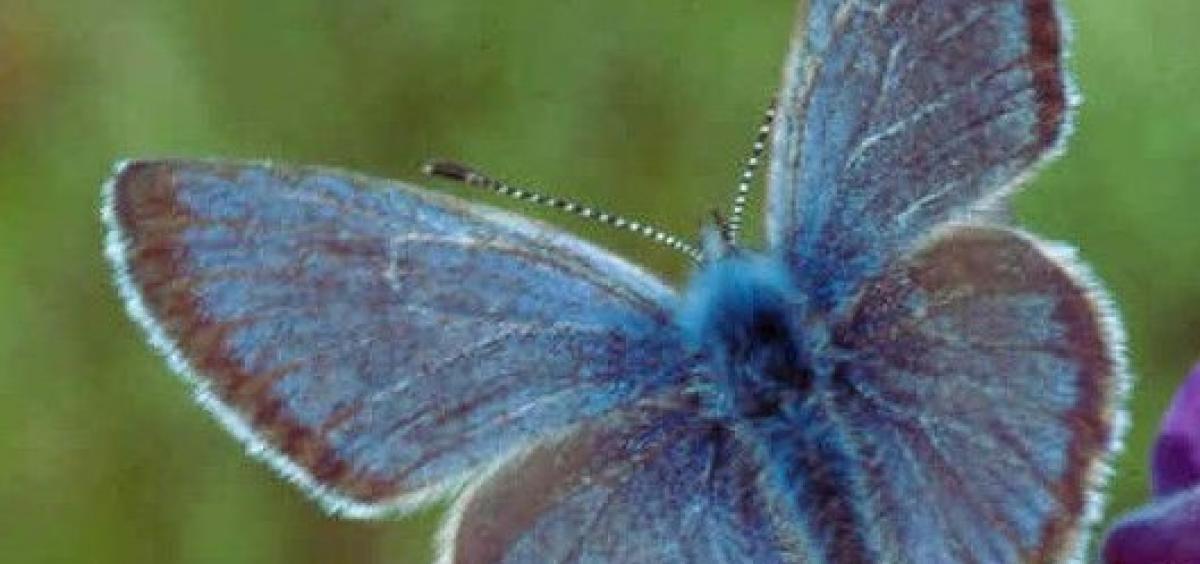
CORVALLIS, Ore. - Researchers at 27 universities and museums around the United States have begun creating what will soon become the world's greatest butterfly collection - in digital form.
When complete, the collection should comprise data from about three million butterfly and moth specimens in North America, providing invaluable data to answer ecological and scientific questions never before possible.
The initiative is supported by a $3.2 million grant from the National Science Foundation and is being coordinated by the Colorado Plateau Biodiversity Center at Northern Arizona University.
"For anyone who's ever created an insect collection, butterflies and moths are the poster children," said Christopher Marshall, curator of the Oregon State Arthropod Collection in the Oregon State University College of Science, which is one of the participants in this project.
"Butterflies generate such a huge base of enthusiasm that people have been collecting them for centuries," Marshall said. "But the gigantic data set that this new collection will make possible is going to help us understand butterflies and moths in ways we never could before, looking back in time and gaining insights into the future."
The digitized data, he said, will allow scientists to see where different butterflies and moths have lived, what changes may have taken place over time, and how they might have been affected by shifts in climate or seasonality. They can study where and when non-native species have arrived, or where native species have been pushed out or extirpated. It will show what species survived and thrived, which ones dwindled and died. It will also help scientists visualize under-sampled places, where more surveys might turn up new, undiscovered species.
The ecological time machine offered by such data will not only be useful now, Marshall said, but will help scientists a century or two in the future better understand the ecological effects of a changing world.
Lepidoptera, the order of insects that includes butterflies and moths, is one of the most widespread, colorful and recognized in the world. They make up more than 200,000 of the 3 million specimens in the Oregon State Arthropod Collection, which is directed by David Maddison and is one of the top 10 university-owned butterfly and moth collections in the nation.
OSU plans to contribute about 140,000 butterfly and moth records to this collaboration. This data will be of particular value to the project, Marshall said, because OSU's holdings are strong in Pacific Northwest species. The varied geographic terrain and unique geological history of Oregon also supports a diverse set of species that live in habitat ranging from coastal rain forests to valleys, mountains, prairies and high sagebrush desert.
"Ecological change is constant, and studies of lepidoptera, which are often linked to particular plants and microhabitats, offer a means to examine how things are changing," Marshall said.
"We have in our collection a single butterfly specimen collected by a schoolboy in Eugene in the 1930s that is now gone from Oregon. Dana Ross, a volunteer in our work, recently brought in a specimen of a moth from Jackson County, Oregon, that was last seen 80 years ago and is one of only three specimens collected in the state.
"As we put the scattered data from all these specimens together, we can begin to see patterns not visible with only a handful of records. This in turn lets us address bigger, more complex questions about the changing biodiversity in the world around us."
Some work on this project has already begun at OSU. Both volunteers and student employees will be used on the project over the next four years. People interested in volunteering can contact Marshall at marshach@science.oregonstate.edu
Having long caught the fascination of humans, about 180,000 species of lepidoptera comprise 10 percent of the total described species of living organisms. Butterflies and moths play major roles in ecosystems as pollinators; their larvae as consumers of vegetation; and themselves as an important part of the food web for other animals.
This project will include the effort of citizen scientists, and organizers say they hope for it to stimulate education, public awareness and conservation efforts about butterflies. At OSU, there are literally hundreds of digitized collections related to natural history and other important fields of science.
"Digitizing these data will have a significant impact for centuries, as big data and analytics become more omnipresent," said Sastry G. Pantula, dean of OSU's College of Science. "A number of species are becoming extinct and new species are being discovered. We are grateful to the National Science Foundation and our policy makers for their vision to support such collections and expand access, especially given the recent constraints on federal funding."
-30-
Editor's Note: Tube and high resolution downloadable video are available to illustrate this story.
High definition researcher interview and B-roll video: https://drive.google.com/folderview?id=0B_nEpHVYyPtpLVVndk5OZzdsWDA&usp=sharing
Watch-only YouTube video: https://youtu.be/agc_8WKvksI
Christopher Marshall, 541-737-4349
Click photos to see a full-size version. Right click and save image to download.